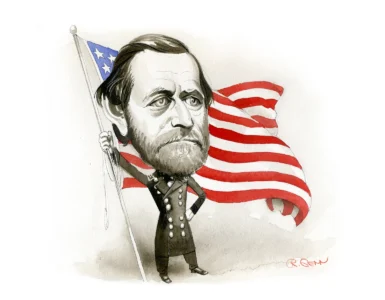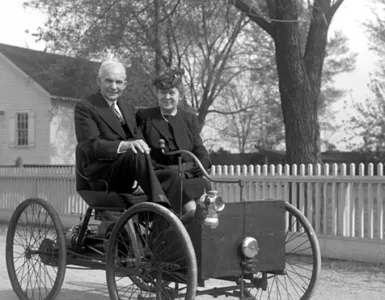Adolf Hitler is one of the most infamous figures in world history, known for his role in World War II and the atrocities of the Holocaust. As the dictator of Nazi Germany, he shaped the course of the 20th century in devastating ways. While he rose to power as a charismatic leader and skilled orator, his legacy is marked by war, hate, and destruction. This article explores Hitler’s life, rise to power, and the profound impact he had on Germany and the world.
Early Life and Struggles
Adolf Hitler was born on April 20, 1889, in Braunau am Inn, a small town in Austria-Hungary (now Austria). He was the fourth of six children born to Alois and Klara Hitler, and only one of his siblings, Paula, survived into adulthood. Hitler’s early life was not easy; he had a troubled relationship with his authoritarian father, who was a customs official, and he was close to his mother, who died when he was just 18.
Hitler was not an exceptional student. He dropped out of high school and moved to Vienna to pursue his dream of becoming an artist. However, he was twice rejected by the Vienna Academy of Fine Arts. During this period, he struggled financially, lived in shelters, and developed strong nationalist and anti-Semitic beliefs that would later shape his political ideologies.
World War I and Entry into Politics
Hitler moved to Munich in 1913, and when World War I broke out in 1914, he enlisted in the German army. He served as a dispatch runner on the Western Front and was injured twice during the war. Hitler was passionate about his role as a soldier and was deeply affected when Germany surrendered in 1918. The defeat, along with the harsh terms of the Treaty of Versailles (which ended the war), fueled his anger and resentment.
After the war, Hitler stayed in the army and was tasked with investigating political groups. It was during this time that he came into contact with the German Workers’ Party (DAP), a small nationalist and anti-Semitic organization. Hitler was drawn to their ideology and quickly rose within the party, which was soon renamed the National Socialist German Workers’ Party, or Nazi Party.
Rise to Power: The Nazi Movement
Hitler’s talent for public speaking and propaganda attracted attention, and he became the face of the Nazi Party. In 1923, he attempted to overthrow the Weimar government in a failed coup known as the Beer Hall Putsch. For his role, Hitler was arrested and sentenced to prison for treason, but he only served nine months of his five-year sentence.
During his time in prison, Hitler wrote “Mein Kampf” (“My Struggle”), which outlined his political ideology, his belief in Aryan racial superiority, and his hatred for Jews, communists, and the Treaty of Versailles. “Mein Kampf” became the foundational text for the Nazi movement.
Following his release from prison, Hitler worked to rebuild the Nazi Party, which began to gain support amid Germany’s economic struggles, political instability, and widespread discontent. By 1932, the Nazi Party had become the largest political party in the Reichstag, Germany’s parliament.
Becoming Chancellor and Dictator
In January 1933, Hitler was appointed Chancellor of Germany, the second-highest political position. Once in power, he quickly worked to eliminate all opposition and consolidate his authority. The turning point came when the Reichstag fire in February 1933 gave Hitler the pretext to declare a state of emergency, suspending civil liberties and giving him the power to arrest political opponents.
By 1934, Hitler had abolished the presidency and declared himself the Führer (leader) of Germany, combining the powers of Chancellor and President. Under his rule, the Nazi Party established a totalitarian regime that controlled all aspects of life, from the media to education, using propaganda, censorship, and secret police forces like the Gestapo.
The Ideology and Policies of the Nazi Regime
The core of Nazi ideology was the belief in the superiority of the Aryan race and the need for racial purity. Anti-Semitism was central to Hitler’s policies, leading to the systematic persecution of Jews. Hitler blamed Jews for Germany’s problems and promoted the idea of a pure Aryan state. The Nazis introduced laws that discriminated against Jews, culminating in the Nuremberg Laws of 1935, which stripped Jews of their citizenship and rights.
Hitler also sought to rebuild Germany as a strong military power, rejecting the Treaty of Versailles and rearming the nation. He aimed for territorial expansion to provide “Lebensraum” or “living space” for the German people. This aggressive expansionism set the stage for the outbreak of World War II.
World War II and the Holocaust
In 1939, Hitler invaded Poland, triggering the start of World War II. Over the next few years, Nazi Germany, alongside its Axis allies, conquered large parts of Europe. Hitler’s military strategies were initially successful, but his ambitions led to overextension. The invasion of the Soviet Union in 1941 and the declaration of war on the United States after the attack on Pearl Harbor proved to be turning points in the war.
During the war, Hitler’s regime carried out the Holocaust, the genocide of six million Jews and millions of others, including Romani people, disabled individuals, and political prisoners. The “Final Solution,” the Nazi plan for the extermination of Jews, was carried out through mass shootings, concentration camps, and gas chambers, making the Holocaust one of the darkest chapters in human history.
The Fall of Nazi Germany and Hitler’s Death
As the war progressed, the Allies pushed back against German forces, and by 1944, the tide had turned against the Nazis. Hitler’s refusal to surrender and his increasingly irrational decisions led to the downfall of Nazi Germany. In April 1945, as Soviet forces closed in on Berlin, Hitler took refuge in an underground bunker. On April 30, 1945, Adolf Hitler committed suicide, bringing an end to his dictatorship. A week later, Germany formally surrendered, marking the end of World War II in Europe.
Hitler’s Legacy and Impact
Adolf Hitler left behind a legacy of destruction, hatred, and devastation. Under his leadership, Nazi Germany was responsible for the deaths of millions of people and the brutal suppression of countless others. His actions led to the loss of lives, displacement of people, and devastation of entire countries during World War II. The Holocaust remains one of the most horrifying examples of genocide in history, and its impact is remembered worldwide as a warning against the dangers of hate, racism, and unchecked power.
Hitler’s rise and fall have been extensively studied to understand how one person could influence an entire nation to commit such atrocities. The consequences of his actions led to a reevaluation of human rights, international laws, and the global fight against fascism and anti-Semitism.
Conclusion
Adolf Hitler’s story is a cautionary tale about the consequences of totalitarianism, unchecked power, and extreme ideology. From his humble beginnings to becoming the dictator of Nazi Germany, Hitler’s life was marked by war, discrimination, and violence. Although he initially rose to power on promises of restoring Germany’s pride and strength, his policies led to destruction, suffering, and loss.
While his legacy is dark, the lessons learned from Hitler’s regime continue to shape our understanding of leadership, governance, and human rights. Remembering the atrocities of his dictatorship is crucial to ensuring that such horrors are never repeated.





Add comment